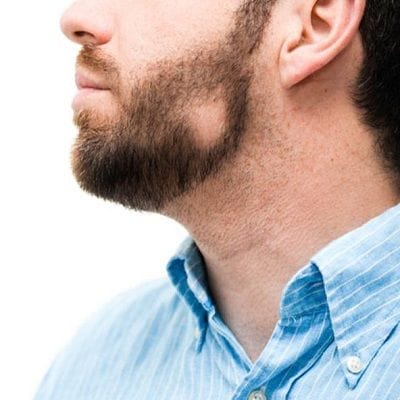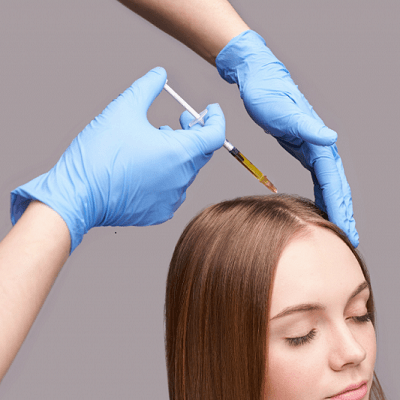
Alopecia areata is a prevalent autoimmune skin condition. It causes hair loss on the scalp, face, and sometimes other body parts. Alopecia areata can affect people of diverse ages, genders, and ethnicities. It usually emerges throughout childhood and is unique to each person who has it.
What exactly is Alopecia Areata?
Alopecia areata is a kind of hair loss that may affect both children and adults. It is non-scarring, which means it does not injure the hair follicle and restore hair. It is classified as an autoimmune disorder that causes inflammation and hair loss. While hair loss is most frequent on the scalp, hair loss may occur elsewhere on the body. Alopecia areata affects the hair and nails and causes no other health issues.
Who is at Risk?
Alopecia areata has two onset peaks, one in childhood and one in maturity, while documented in people of all ages. Alopecia areata, like other autoimmune diseases, most likely has a hereditary base with unknown triggers that cause hair loss. Type 1 diabetes, celiac disease, rheumatoid arthritis, vitiligo, thyroid illness, multiple sclerosis, and explosive bowel disease are all associated disorders in the patient or family that may indicate an elevated risk.
What exactly causes alopecia areata?
Several elements contribute to the emergence of this complicated illness. Alopecia areata is an autoimmune condition, which means that your immune system misidentifies your body’s normal cells as foreign invaders and assaults them.
Scientists aren’t clear what “triggers” the immune system to target healthy hair follicles in persons with alopecia areata or if these triggers occur inside the body (from a virus or bacterium), or outside the body (from something in your environment).
What are the Signs and Symptoms of Alopecia Areata?
The abrupt look of smooth, spherical, hairless patches on the scalp depicts Alopecia areata. The afflicted regions are typically skin-colored but can be peach in hue: a few scattered short-colored or white hairs within the bald area.
There is no redness or scaling on the skin’s surface in alopecia areata. Children often show one to several tiny patches of hair loss on the scalp but may sometimes have faster hair loss affecting the whole scalp, brows, eyelashes, and body hair. The surface of your child’s nails may have tiny pits.
Alopecia areata in males
Alopecia areata affects both males and females, but males are more prone to experience substantial hair loss. Males are more likely to have a familial history of hair loss.
Men’s facial hair and scalp, chest, and back hair may undergo hair loss. This disorder causes patchy hair loss instead of male-pattern baldness, which causes a progressive thinning of hair all over.
Alopecia areata in females
Females are more prone than males to get alopecia areata, although it is unclear why. Hair loss can affect the scalp and the brows and lashes.
Unlike female-pattern hair loss, characterized by a progressive thinning of hair over a broad region, alopecia areata may be limited to a small area. Hair loss for women might sometimes occur all at once. The part may gradually enlarge, resulting in increased hair loss.
Alopecia areata in children
Alopecia areata can occur in children. Most persons with the illness will notice their first signs of hair loss before 30.
While alopecia areata has a genetic component, parents with the disorder don’t necessarily pass it on to their children. Similarly, children with this hair loss may not have a parent who suffers from it.
Aside from hair loss, children may have nail flaws such as pitting or sores. This extra symptom can also occur in adults, although it is more prevalent in youngsters.
According to the National Alopecia Areata Foundation, alopecia has little emotional impact on children under five. Hair loss, however, may be upsetting for young children after the age of 5 as they begin to notice how they vary from others.
If your kid seems worried or sad, ask your physician to recommend a child-friendly psychotherapist.
Types
Alopecia areata comes in various forms. The degree of hair loss and any other symptoms you may be experiencing distinguishes each kind. Each array may also require somewhat different therapy and have a varied prognosis.
Alopecia areata (patchy)
This kind of alopecia areata is distinguished by one or more coin-sized patches of hair loss on the skin or torso. It might progress to alopecia totalis or alopecia Universalis if this disease worsens.
Alopecia totalis
Alopecia totalis is characterized by the complete hair loss on the scalp.
Alopecia Universalis
People with this kind of alopecia areata lose all hair on their face, including brows and eyelashes, in addition to scalp hair. Other body hair, such as the chest, back, and pubic hair, can also be lost.
Diffuse alopecia areata
Diffuse alopecia areata might resemble female or male pattern hair loss. It causes abrupt and sudden hair loss all over the scalp, not only in one area or spot.
Ophiasis alopecia
Ophiasis alopecia is defined as hair loss that follows a band along the sides and lower back of the head.
Treatment Options for Alopecia Areata
Some areas of hair loss will regenerate hair on their own without therapy.
The majority of patients and families, on the other hand, are eager to undertake therapy to hasten hair regeneration. The patient’s age determines the treatment chosen, the extent of the hair loss, the length of time the hair loss has been present, and other medical issues.
Pediatric dermatologists may prescribe the following treatments:
- Topical steroids,
- Steroid injections
- Topical minoxidil (Rogaine)
- Topical irritants
- Immunotherapy
- Immunosuppressant medications
Last words
Alopecia areata is a complex problem to manage. Many people’s hair loss resolves spontaneously, but they must deal with quick and noticeable hair loss in the meantime. Consult your healthcare practitioner about prospective hair loss treatments, therapies, and cosmetic choices to alleviate shame and anxiety.











